Birds in Lagos, Nigeria, are a diverse and vibrant species of animals. The city’s tropical environment and rich biodiversity make it an ideal habitat for a variety of bird species.
From colorful parrots to graceful herons, there are plenty of interesting birds to be found in Lagos. Bird watchers and ornithologists alike can find plenty of birds to observe in the city.
Whether you are a novice or an experienced bird-watcher, you can find something of interest in Lagos.
1. Black-Crowned Night Heron
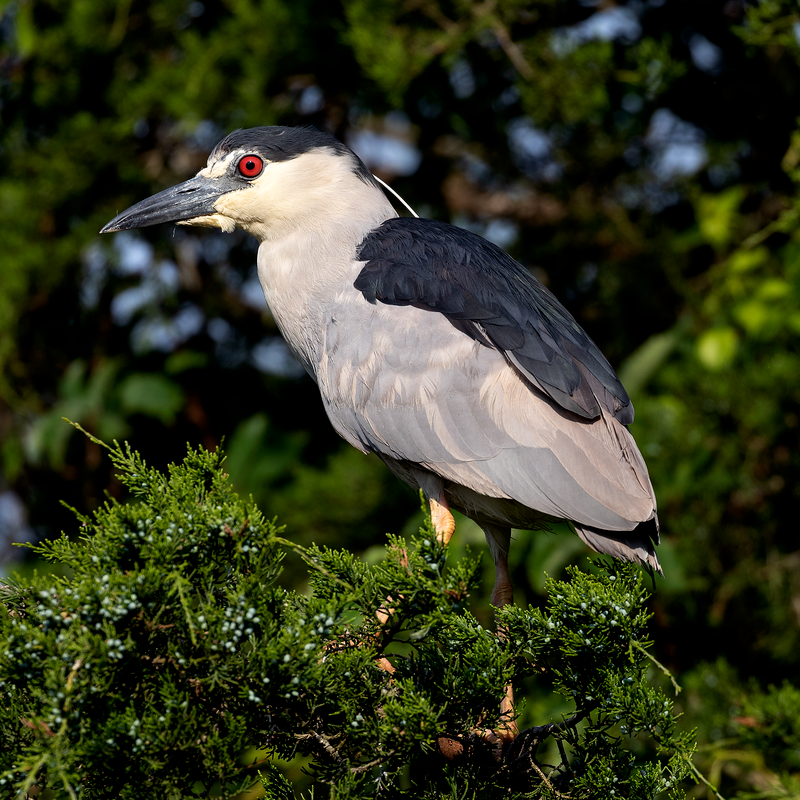
The black-crowned night heron, or black-capped night heron, is a species of heron that is found in many parts of the world. This bird is usually referred to as just night-heron in Eurasia. It is a medium-sized heron with a black crown, which is easily recognizable.
The bird is found in parts of Europe, Asia, and North and South America. It is typically found near bodies of water, such as rivers, lakes, and estuaries. This species of heron is active at night, as its name suggests, and is usually seen alone or in small groups.
They feed on small fish, insects, frogs, and crustaceans. It is an excellent hunter, able to spot its prey from a great distance away. The black-crowned night heron is a great migratory species, and can often be seen during the winter months in warmer parts of the world.
It is an important part of the food chain and is an important species for conservation efforts.
| Kingdom | Animalia |
| Phylum | Chordata |
| Class | Aves |
| Order | Pelecaniformes |
| Family | Ardeidae |
| Genus | Nycticorax |
| Species | N. nycticorax |
2. Finches
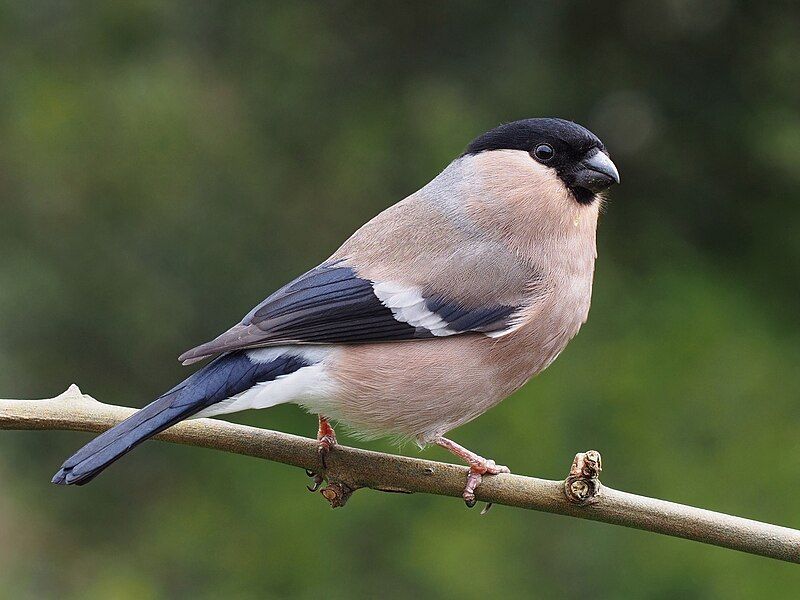
True finches are a variety of passerine birds that belong to the scientific family Fringillidae. These birds typically range in size from small to medium and have a variety of different plumage colors.
They are commonly known for having a stout conical bill that is well-suited for eating seeds and nuts.
True finches are found in a wide variety of habitats, from grasslands and open woodlands to urban areas, and generally remain in the same region throughout their lives without migrating. This allows them to create strong social bonds with other finches in their area.
Additionally, many species of true finches are popular as cage birds due to their bright colors and generally calm nature.
| Kingdom | Animalia |
| Phylum | Chordata |
| Class | Aves |
| Order | Passeriformes |
| Family | Fringillidae |
3. African Green Pigeon
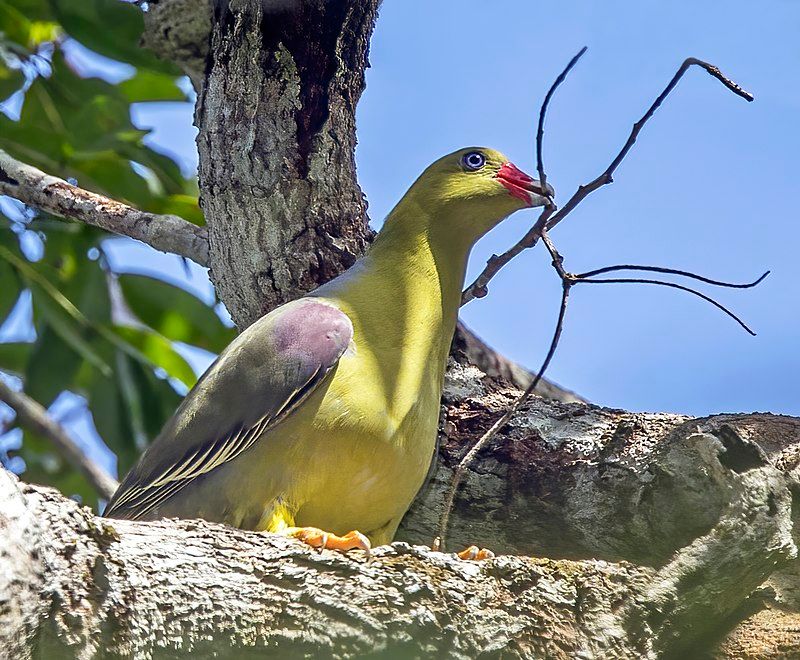
The African Green Pigeon is a species of bird found in the family Columbidae. It is one of five green pigeon species found in the Afrotropics, a geographical region that includes Sub-Saharan Africa and the tropical regions of the Middle East and Madagascar.
The African Green Pigeon has a wide range in Sub-Saharan Africa, covering an area of 17 accepted races. This species of pigeon is usually found in woodlands, savanna, and grasslands, but it is also known to inhabit urban areas.
Its diet primarily consists of fruit, seeds, and flowers, but it will also feed on insects and small invertebrates. The African Green Pigeon is an important seed disperser for many species of trees and shrubs, making it a key species for conservation in Sub-Saharan Africa.
| Kingdom | Animalia |
| Phylum | Chordata |
| Class | Aves |
| Order | Columbiformes |
| Family | Columbidae |
| Genus | Treron |
| Species | T. calvus |
4. Peafowl
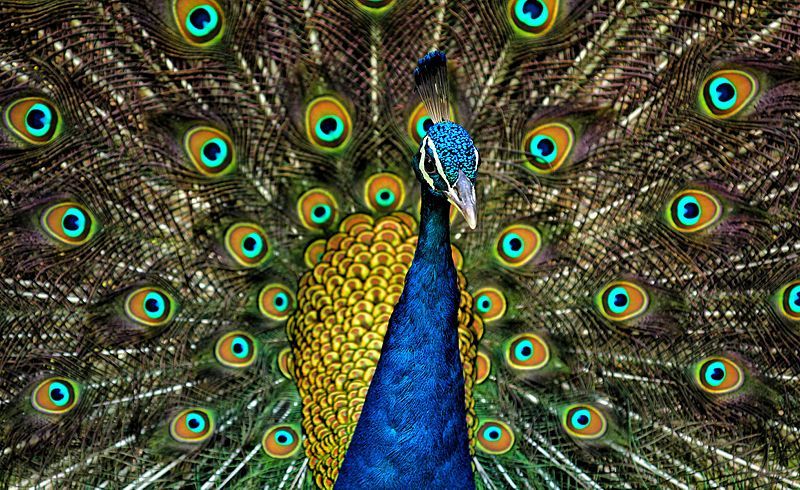
Peafowl is a collective name for three species of birds within the family Phasianidae. These birds are Pavo and Afropavo, which belong to the tribe Pavonini. The males of these species are called peacocks, while the females are referred to as peahens.
Although they are different species, they are often referred to collectively as “peacocks” in everyday language. Peacocks are known for their large and showy tail feathers, while peahens are distinguished by their smaller size.
Peafowl are commonly found in the wild as well as in captivity. In the wild, they tend to inhabit areas with plenty of cover, such as forests and grasslands. They are omnivorous, feasting on fruits, insects, and small mammals.
Peafowl are a popular choice of pet due to their beauty and intelligence. They are also popular in aviculture, with many breeders offering various color mutations and other exclusive varieties.
| Kingdom | Animalia |
| Phylum | Chordata |
| Class | Aves |
| Order | Galliformes |
| Family | Phasianidae |
5. Lemon Dove
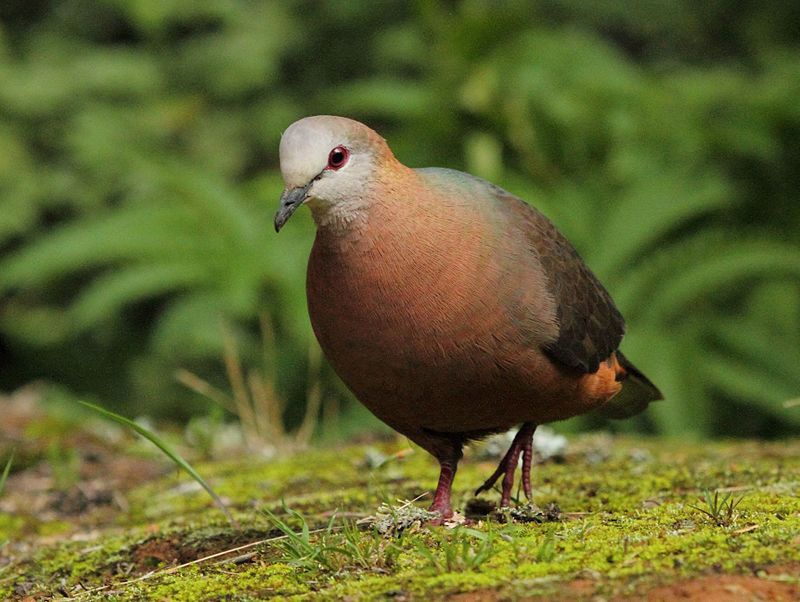
The lemon dove is a species of bird that belongs to the Columbidae family, which consists of pigeons and doves. This species can be found in the montane forests of sub-Saharan Africa.
There is also a subspecies of the lemon dove found in São Tomé, which is known as the São Tomé lemon dove. The lemon dove has a unique plumage with a generally brownish-grey color and a cinnamon brown breast. This makes it stand out amongst other birds in its family.
The lemon dove is a relatively small bird, with its size ranging from 23-26 cm in length. It is a mainly terrestrial bird and can be found foraging for food on the forest floor.
It is also an omnivorous bird, with its diet consisting of fruits, seeds, invertebrates, and small vertebrates. The lemon dove is mostly active during the day and is usually seen in pairs or small flocks.
| Kingdom | Animalia |
| Phylum | Chordata |
| Class | Aves |
| Order | Columbiformes |
| Family | Columbidae |
| Genus | Columba |
| Species | C. larvata |
6. Squacco Heron
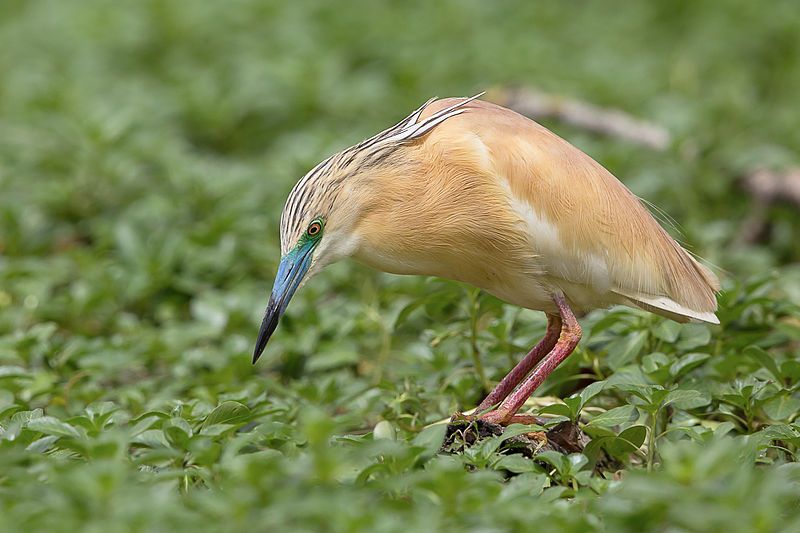
The squacco heron is a small species of heron, generally measuring 44–47 cm long and having a wingspan of 80–92 cm. Its body is usually quite short, at around 20–23 cm.
This species of heron is native to the Old World, with its main breeding grounds being in southern Europe and the Greater Middle East. It is primarily an aquatic bird, found near bodies of water such as lakes, rivers, and wetlands.
Its diet consists of a range of aquatic creatures including fish, frogs, and insects. The squacco heron is a wading bird, which stands on the edge of the water and uses its long neck to probe for prey.
Its plumage is usually grey-brown in color, and its head and neck are streaked with black and white markings. It has yellow legs and feet which are adapted for walking on the muddy banks of wetlands.
The squacco heron is a fairly common bird, although its population is decreasing due to habitat destruction and pollution.
| Kingdom | Animalia |
| Phylum | Chordata |
| Class | Aves |
| Order | Pelecaniformes |
| Family | Ardeidae |
| Genus | Ardeola |
| Species | A. ralloides |
7. Black-Winged Stilt
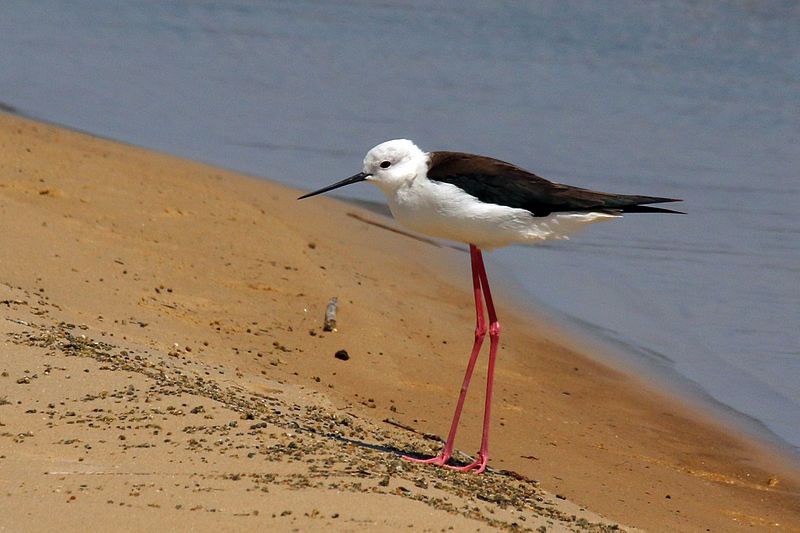
The black-winged stilt (H. himantopus) is a species of bird that is part of the Avocet and Stilt family. It is found in many parts of the world, making it a nearly cosmopolitan species.
This species has exceptionally long legs, which it uses to wade in the shallow waters of its habitats looking for food. The black-winged stilt is a distinctive bird with a black body and wings and white and grayish feathers on its head and neck.
The white feathers that cover its head and neck are usually bordered with a black stripe. Its long, thin beak is curved slightly downwards.
The long, spindly legs of the black-winged stilt help it to navigate the shallow waters of its habitat. The black-winged stilt is an omnivore and feeds on small crustaceans, insects, and small fish. It is also a diurnal species, meaning it is active during the day.
This species can be found in a variety of habitats, including marshes, shorelines, and wet grasslands. The black-winged stilt is a globally widespread species, and it is considered to be of least concern on the IUCN Red List.
This is because of its large global population and wide distribution. Despite this, the species is facing some threats due to the degradation of its habitats by human activities. It is also vulnerable to the effects of climate change.
To ensure the long-term survival of this species, conservation measures must be taken to protect its habitats and the wetlands it depends on.
| Kingdom | Animalia |
| Phylum | Chordata |
| Class | Aves |
| Order | Charadriiformes |
| Family | Recurvirostridae |
| Genus | Himantopus |
| Species | H. himantopus |
8. African Sacred Ibis
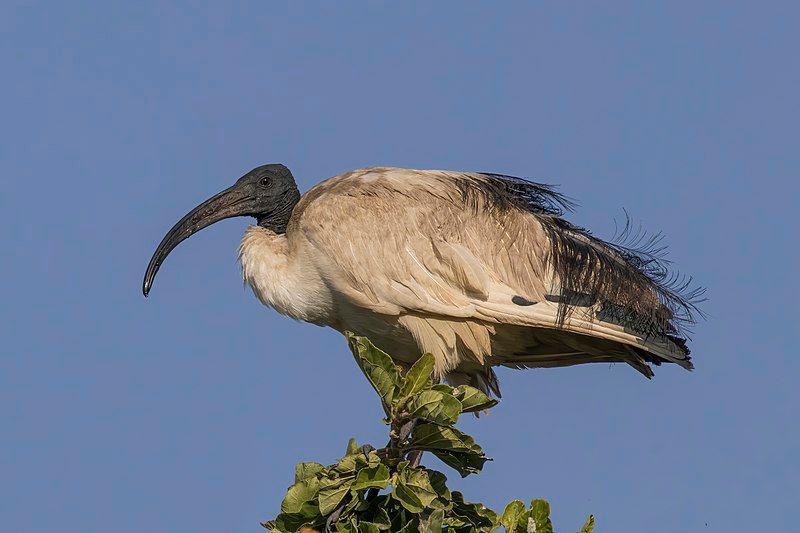
The African sacred ibis is a species of wading bird that belongs to the family Threskiornithidae. It is native to most parts of Africa, as well as to some regions of Iraq, Iran, and Kuwait.
This species is especially well-known for its role in the religion of the Ancient Egyptians, where it was associated with the god Thoth. It was believed to be his sacred animal and was often depicted in hieroglyphs and other religious symbols.
It is thought that the bird was chosen by the Ancient Egyptians to represent Thoth due to its intelligence and its ability to find food in the desert.
The African sacred ibis was also used in the Ancient Egyptians’ mummification process, as it was believed that the bird’s feathers could help to protect the dead from evil spirits.
| Kingdom | Animalia |
| Phylum | Chordata |
| Class | Aves |
| Order | Pelecaniformes |
| Family | Threskiornithidae |
| Genus | Threskiornis |
| Species | T. aethiopicus |
9. Black-throated Coucal
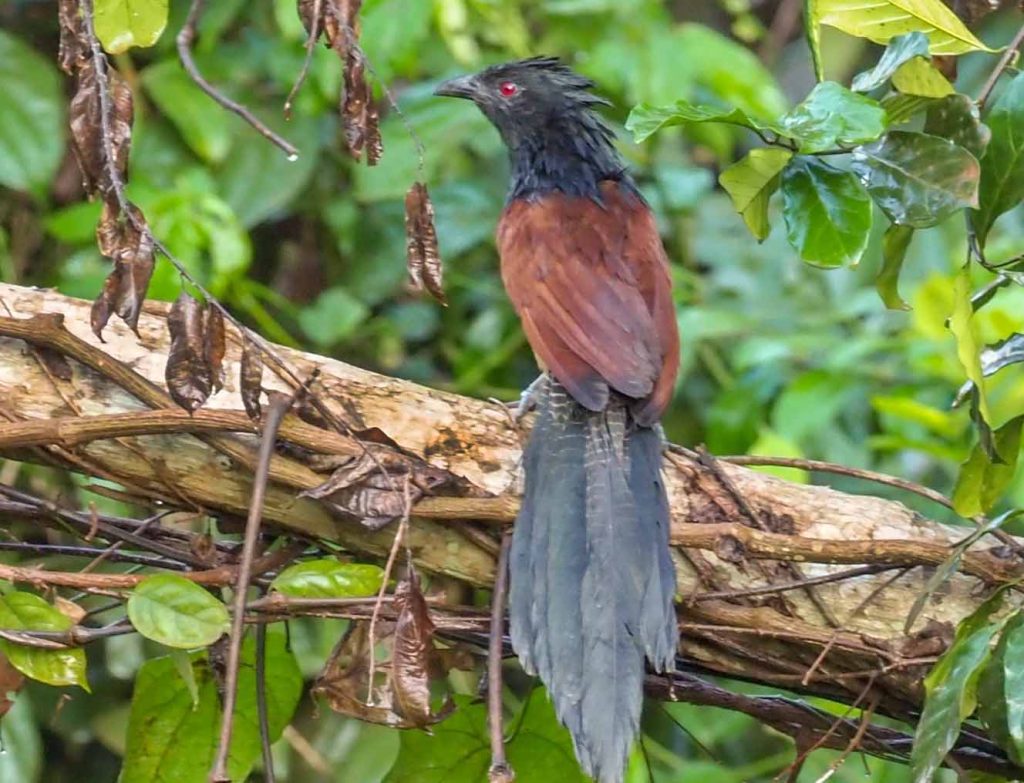
Source: ebird.org
The black-throated coucal is a species of cuckoo in the Cuculidae family. It is a medium-sized bird native to West Africa, where it inhabits dense second-growth along forest edges and grassy swamps.
There is a subspecies of the black-throated coucal found in northern and central Zaire that is sometimes split off and labeled as Neumann’s coucal.
This is because Neumann’s coucal is distinct from the other black-throated coucals in its range, with a shorter tail and a darker plumage. The Neumann’s coucal is mainly found in lowland forests, such as those in the Congo basin and the lower reaches of the Ubangi River.
It is also found in more open habitats, such as savannas, grasslands, and secondary growth. The black-throated coucal is an omnivore, feeding on a variety of small invertebrates, fruits, and seeds.
It is a very vocal bird, and its presence is often given away by its loud, harsh calls.
| Kingdom | Animalia |
| Phylum | Chordata |
| Class | Aves |
| Order | Cuculiformes |
| Family | Cuculidae |
| Genus | Centropus |
| Species | C. leucogaster |
10. Blue Quail
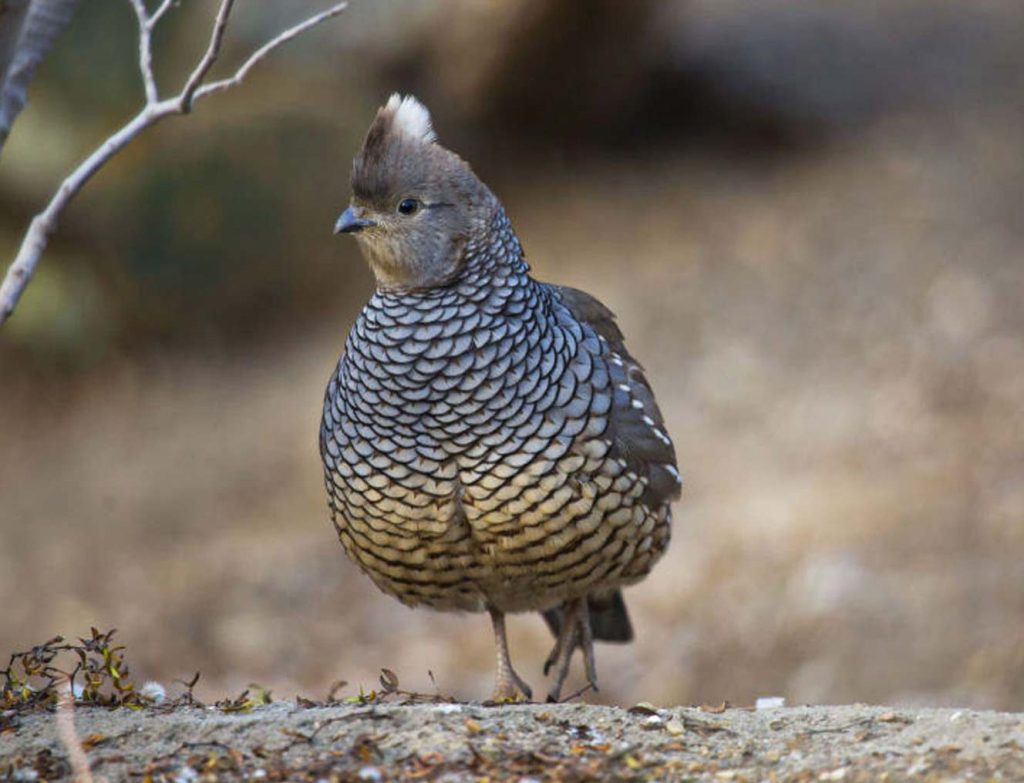
Source: thehappychickencoop.com
The Blue Quail is a species of bird found in sub-Saharan Africa, belonging to the family Phasianidae. Known also as African Blue Quail, this species is characterized by its colorful plumage and large size.
The males of this species have a blueish-grey head and neck, while the body is a rich brownish-black. The females have a light brown back, throat, and breast, with the wings being a lighter shade.
The tail is black with white barring, and the legs are a reddish-orange color. The Blue Quail is a land bird, preferring more open habitats such as grasslands and savannas. They typically feed on the ground, although they may also forage in trees for insects and fruit.
During the breeding season, the males of the species can be seen displaying to the females, by flying up into the air and calling out. These birds are known to form flocks of up to thirty individuals.
They are sociable and often seen in the presence of other species of quail, as well as with partridges and francolins.
Their diet consists mainly of seeds, but they may also eat insects and small invertebrates. The Blue Quail is a species of conservation concern, as it is threatened by the destruction of its habitats due to human activities.
It is also hunted for sport and food, further adding to its decline. Conservation efforts are underway to protect this species and its habitats.
| Kingdom | Animalia |
| Phylum | Chordata |
| Class | Aves |
| Order | Galliformes |
| Family | Phasianidae |
| Genus | Synoicus |
| Species | S. adansonii |
11. White-crested Turaco
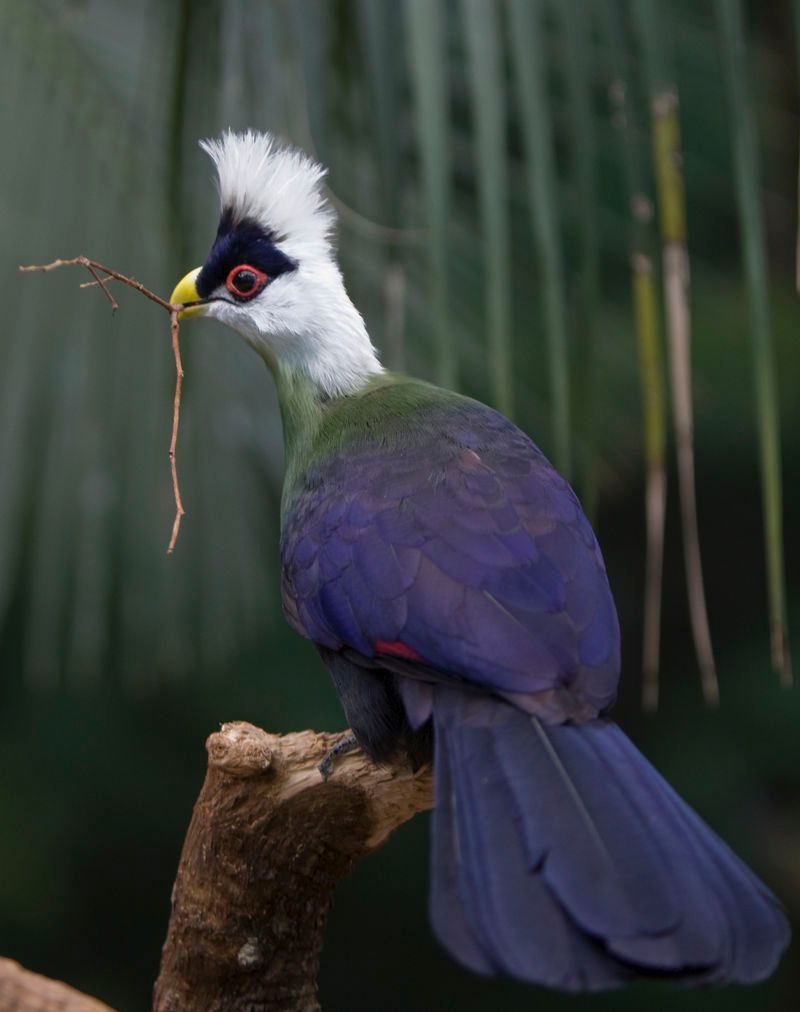
The white-crested turaco is an African bird belonging to the Musophagidae family, a group of otidimorph birds. It is found in riverine forests and woodlands in an area stretching from eastern Nigeria to western Kenya.
This species is distinct from other birds in its family by its white crest, which is the source of its common name. The white-crested turaco prefers to inhabit dense riverine forests and woodland, where it finds plenty of shelter and food.
It feeds on fruits, berries, and insects, and is found in a variety of habitats, including savanna and grassland. This species is territorial and usually lives in small groups, raising its young in small nests. The white-crested turaco is an important species in its native range.
Its presence indicates a healthy ecosystem, and the bird plays an important role in seed dispersal, helping to spread the diversity of plant species across the landscape. Unfortunately, due to habitat destruction and degradation, the population of this species is declining.
Conservationists are working to protect the remaining populations of this species and ensure its long-term survival.
| Kingdom | Animalia |
| Phylum | Chordata |
| Class | Aves |
| Order | Musophagiformes |
| Family | Musophagidae |
| Genus | Tauraco |
| Species | T. leucolophus |
12. Fiery-Necked Nightjar
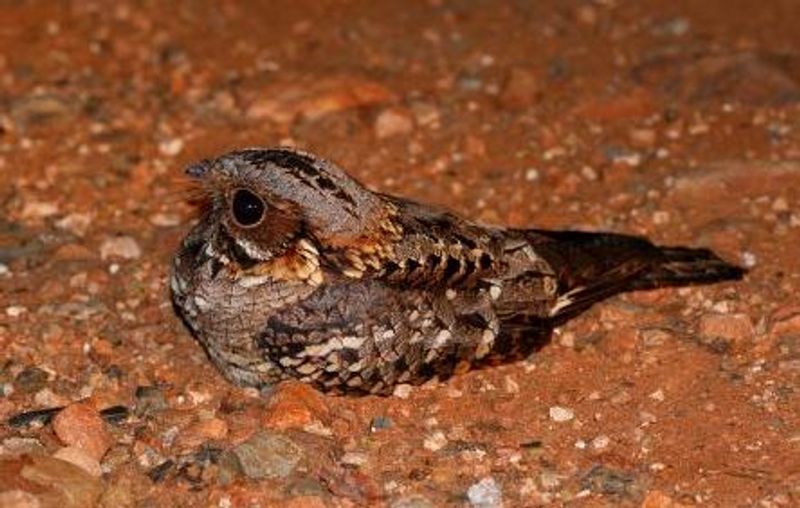
The Fiery-necked Nightjar is a species of bird that is found in Africa south of the equator. It is a member of the family Caprimulgidae, which is a group of nocturnal insectivorous birds.
The Fiery-necked Nightjar is distinguished by its unique and distinct call which can be heard during the evening hours. Its call is often described as “good-lord-deliver-us”, and it is one of the most recognizable calls of the Nightjar family.
The Fiery-necked Nightjar is a medium-sized bird with greyish-brown plumage and a bright orange or reddish-orange patch on its head and neck. This patch is quite striking and helps to distinguish it from other birds in the nightjar family.
Its diet consists mainly of insects which it catches in flight, and it is believed to mainly inhabit open grassland and savannah areas. The Fiery-necked Nightjar is an important species of African wildlife, and its distinctive call is a reminder of the beauty of nature.
| Kingdom | Animalia |
| Phylum | Chordata |
| Class | Aves |
| Clade | Strisores |
| Order | Caprimulgiformes |
| Family | Caprimulgidae |
| Genus | Caprimulgus |
| Species | C. pectoralis |
13. Western Bronze-Naped Pigeon
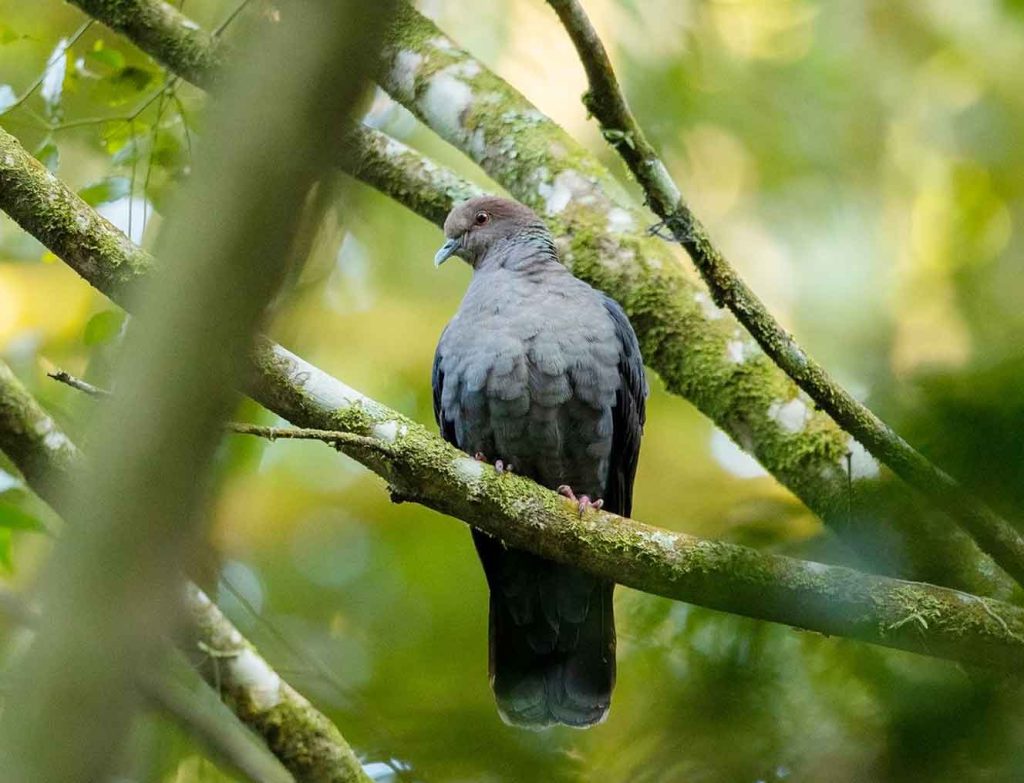
Source: Niall.co.za
The Western Bronze-naped Pigeon is a species of bird in the Columbidae family. It belongs to the subgenus Turturoena. It is considered to be a medium-sized bird, with a pale, broad terminal tail band that is quite visible upon landing.
The species can be found in most countries of Africa and is classified as a species of least concern by the IUCN Red List. The Western Bronze-naped Pigeon is a member of the Columbidae family, which includes a wide array of birds, such as doves, pigeons, and quails.
It belongs to the subgenus Turturoena, a group of birds with a distinct set of characteristics. This species has a pale and broad tail band, which is visible when it lands.
The Western Bronze-naped Pigeon is found across many countries in Africa, making it a fairly common species. The IUCN Red List is an international organization that provides detailed assessments of species populations.
It classifies the Western Bronze-naped Pigeon as a species of least concern. This means that the species is not threatened by extinction and is relatively stable in terms of population.
In conclusion, the Western Bronze-naped Pigeon is a species of bird found in many countries of Africa. It belongs to the Columbidae family and the subgenus Turturoena. It is a medium-sized bird with a pale, broad terminal tail band, which is quite visible when it lands.
This species is classified as a species of least concern by the IUCN Red List, which means that its population is relatively stable.
| Kingdom | Animalia |
| Phylum | Chordata |
| Class | Aves |
| Order | Columbiformes |
| Family | Columbidae |
| Genus | Columba |
| Species | C. iriditorques |
Conclusion
Lagos is a great place for birding, with a wide variety of species to observe. The city’s numerous parks, wetlands, and other natural areas provide habitats for a variety of birds, including many rare and endangered species.
Birders in Lagos can enjoy the thrill of discovering new species, as well as watching familiar favorites in their natural environment.
Whether you’re a beginner or an experienced birder, Lagos is a great destination for enjoying the beauty of birds and the wonder of nature.